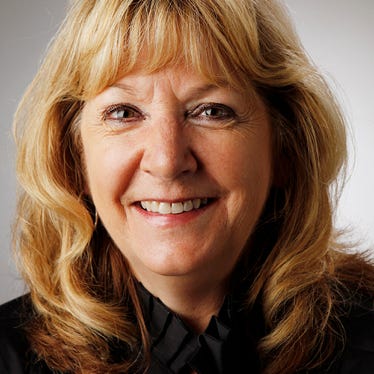June 27, 2023

Abe Lincoln was a big fan of his wife, Mary’s, cooking.
Take her white cake, for example. Mary Todd Lincoln’s white cake recipe was created by Monsieur Mathurin Giron, a famous Lexington, Ky., confectioner who owned a bakery and a dancing hall, during Marquis de Lafayette’s visit to Lexington as part of his U.S. road tour in 1825. The Todd family received the recipe from Giron and treasured it.
It was served one evening when Abe came to court Mary, and eventually was served at their wedding. The recipe went with Mary to Springfield, Ill., and was served on special occasions there — and at the White House. Legend has it that Mary often made this cake for the president, and he always commented, “Mary’s white cake is the best I have ever eaten.”
The recipe and several others, including Mary’s biscuits, are part of the History Cooks program. I recently made and served the biscuits to a crowd of 66 who gathered for the program. The National Park Service, Lincoln Community College and the Springfield Visitors Bureau are partnering to offer this program on Friday afternoons throughout the summer under a tent outside Lincoln’s home in Springfield.
If you’ve ever wondered what Mary Todd Lincoln fed her hungry boys, or how ethnic diversity played into the food of the Lincoln neighborhood, or what was served at Lincoln’s Inaugural Dinner, these live cooking demonstrations are the place to get your answers.
History tells that Abe and Mary grew up very differently. Abe was from a rural farming community where his father labored to make a living. Mary was from a privileged slave-holding Southern family near Lexington, Ky. Abe grew up loving corn cakes and Kentucky “wonders” (like hush puppies). Mary’s family sat down to elegantly appointed dinners every night. The table at the Todd home was set with the family’s best china and the best of Southern food. By contrast, Abe’s family grew most of their food themselves and ate very humbly.
But both tables had biscuits. These weren’t like the biscuits we know today because baking powder and baking soda weren’t yet available. They were beaten biscuits — skinny, like crackers. Abe would carry some in his pockets for lunch while he worked.
Those biscuits were literally beaten with a hammer for a half-hour, according to “First Lady Food – and the Slave Behind It” by Geschenke. In her Southern home, Mary grew up with Aunt Cheney, a slave cook, and Uncle Nelson, the slave butler. The two shared the tasks of food preparation — putting up butter and pickling in the fall, going to market to get staples, and beating biscuits and making cornbread.
Historical cooking
Mary’s home in Kentucky had a stone-top counter in the back kitchen of the house where the biscuits were made. The unleavened dough was mixed with very cold milk, and then rolled thin enough until it blistered. Then it was perforated with a fork and baked into a thinner, crisper biscuit. Beating the dough with a rolling pin or mallet as the dough was folded and turned incorporated air and lightness. Old books suggest “100 strokes”; others said it could take as long as a half-hour before the dough “squeaks” with bubbles. Kentuckians commonly split them and used them to make a sandwich with country ham, another local staple.
History says that when Abe and Mary visited the home in 1851 to help settle her father’s estate, Mary sat with Aunt Cheney to transcribe her recipe for beaten biscuits and cornbread to take back to her Irish cook in Springfield.
Mary got many of her staples such as sugar, coffee and flour from the Jacob Bunn store on the south side of the Springfield State Capitol square. Descendants of the Bunns are still in the food business, with a restaurant on the west side of Springfield. Bunn Gourmet offers handmade chocolates, coffee, pastries and light lunch items. The family is also known for their Bunn coffee makers.
It all started back in 1840 when Bunn, Murray McConnel and H.W. Vansyckle opened a grocery store named McConnel, Bunn & Co. By July 1842, Bunn bought out both partners and changed the name to J. Bunn & Co. He continued to buy from McConnell, who was a big wholesaler and owned a large steam flouring mill in the port of Naples on the Illinois River. The Lincolns were family and professional friends. Abe was Bunn’s lawyer in 29 cases from 1844 to 1858. So, it was only natural that Mary was a customer of his nearby grocery store.
In addition to beaten biscuits and cornbread, later in her life, Mary missed other foods from her youth and married life in Springfield. While living in France, she wrote to her grandnephew Louis Baker:
“How I long to see you all — to have a taste for your dear grandma’s good food — waffles, batter cakes, egg, cornbread — all are unknown here — as to biscuits, light rolls and they have never been dreamed of — not to speak of buckwheat cakes.”
While this isn’t the exact recipe for beaten biscuits, it is a historical version that Mary probably would have made after baking soda was invented.
Mary Todd’s Biscuits
1 quart flour (4 cups)
1 pint buttermilk (2 cups)
1 tablespoon butter or lard
½ teaspoon soda
½ teaspoon salt
Mix together. Form into a dough. Spread on a board and roll to desired thickness with a rolling pin. Use a biscuit cutter to cut and place on baking sheet lined with parchment. Bake in a 400-degree-F oven for 15 to 18 minutes. Makes about 20 biscuits.
Mrs. Lincoln’s White Cake
1 cup butter
2 cups sugar
3 cups cake flour
2 teaspoons baking powder
1 cup milk
1 teaspoon vanilla extract
1 teaspoon almond extract
1 cup chopped blanched almonds
6 egg whites
¼ teaspoon salt
Cream butter and sugar until light and fluffy. Sift together flour and baking powder; remove 2 tablespoons and set aside. Add sifted ingredients, alternating with milk, to creamed mixture. Stir in vanilla and almond extract. Combine almonds with reserved flour and add to batter.
Beat egg whites until stiff; add in salt. Fold into batter. Pour into three greased and floured 8- or 9-inch cake pans. Bake at 350 degrees F until a cake tester comes out clean, 20 to 25 minutes. Cool five to 10 minutes, remove from pans and cool on racks.
Frosting:
2 cups sugar
1 cup water
2 egg whites
½ cup chopped candied cherries
½ cup chopped candied pineapple
Few drops vanilla or almond extract
Combine sugar and water in a saucepan, stirring until sugar is dissolved. Bring to a boil; cover and cook about three minutes, until the steam has washed down any sugar crystals that may have formed on the side of the pan. Uncover and cook until syrup reaches 238 to 240 degrees F.
Whip egg whites until frothy; pour into syrup in thin stream, whipping egg whites constantly until frosting is spreading consistency. Add cherries, pineapple and flavoring.
Fargo Ware is a registered dietitian with Southern Illinois University Medical School in Springfield. Send recipe ideas to her at [email protected].
About the Author(s)
You May Also Like






